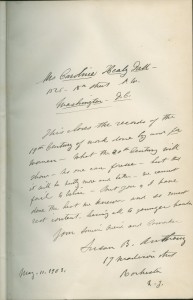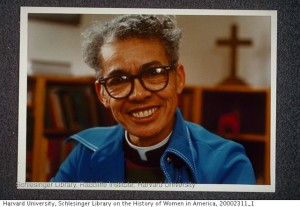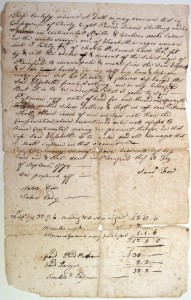New Collection Documents the Years Before and After Women’s Suffrage
ø
Out of the blue, in March, came a call from the great-granddaughter of Edna Lamprey Stantial. Stantial was for many years archivist of the National American Woman Suffrage Association. Her name is familiar to those who study that era, but there is no significant collection of her papers anywhere. That made the answer to the question of whether Schlesinger Library would be interested in Stantial’s papers easy – yes!
When the cartons arrived in June, it became clear just what a gift—to the library and to scholarship—the Stantial papers are. There are dozens of letters among the leading American suffragists, including Alice Stone Blackwell, Carrie Chapman Catt, and Maud Wood Park (Radcliffe ’98), whose gift in 1943 of women’s materials to her alma mater became the nucleus of the Women’s Archives, later the Schlesinger Library. Additionally, the collection contains articles, photographs, clippings, and rare ephemera.
Most importantly, the papers continue the story of the struggle for women’s rights into the decades beyond the passage of the 19th amendment, offering insight into the issues with which women wrestled, the strategies they employed, and the relationships they forged into the 1920s, ‘30s, and ‘40s.
Among the exciting finds in the Stantial papers are these stirring words to “Woman’s America,” sung to the tune of “America” as well as programs for suffrage pageants and parades, like this one in Connecticut in 1914. The programs often included photographs of the movement’s leaders with their children, making the point that they were young, beautiful, married, and mothers.
While the collection is closed until processed, general information is available from the HOLLIS record at http://tinyurl.com/3rca72q .
 Mrs. Thomas Hepburn, President of the Connecticut Woman Suffrage Association and Chairman of the Parade Committee
|








